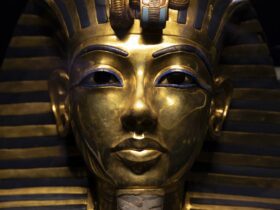The Moon is an astronomical body that orbits planet Earth, being Earth’s only permanent natural satellite. It is the fifth-largest natural satellite in the Solar System, and the largest among planetary satellites relative to the size of the planet that it orbits (its primary).
The moon passes through all of its phases throughout the course of a lunar month. In the same way as the sun illuminates half of the earth, the sun illuminates half of the moon, leaving the other half completely dark. The apparent phases of the Moon are produced by the alignment that the Moon creates with the Sun when viewed from Earth’s perspective.
A full moon happens whenever the side of the moon that faces the Earth is entirely lit by the sun for the whole duration of the day. Full moons come in a variety of shapes and sizes, some of which are rather unique, such as red moons, enormous moons, blue moons, and harvest moons, and many others. Notwithstanding the their exotic nicknames, this does not imply that they are adopting these tones, since they are merely vernacular names for these colors.
The moon will be at its peak magnificence for the month of March on Friday, March 18 at 02:17 UTC, marking the conclusion of the month. This is referred to as the Worm Moon in the United States, and NASA has verified that this is the correct name for the moon.
Worm Moon
So, what is the significance of the Worm Moon in March? There are a handful of possibilities for why this is happening. One theory is that once the soil thaws, earthworms will begin to emerge, attracting all of the birds to the yard. According to the almanac, the alternative theory is that worm-like insects and larvae start to appear from the bark of trees around this time. As a result, keep an eye out for the last moon of winter on March 18 to bid adieu! Enjoy your time spent looking at the moon!












Leave a Reply